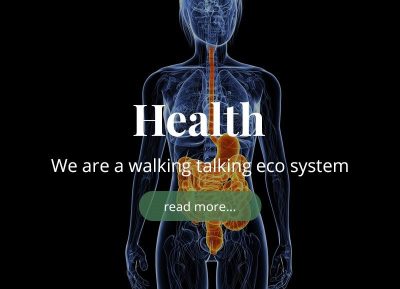Super Bugs For Super Health - How The Microbiome Protects The Gut

Did you know we are only 10 percent human? Ninety percent of our cells are nonhuman, microbial cells. Humans and our ancestors have evolved since the most ancient times with a commensal microbiota. This is the term used to describe the microbial environment that lives within the human body.
Since our diet influences our microbes, it’s true: we really are what we eat and absorb. A healthy well-balanced microbiota is essential for good health and longevity. Imbalances can impact the functioning of every single body system and speed disease process.
Good News & Bad News
The good news is that you can cultivate a new microbiota, formerly known as gut flora, quickly by changing what you eat. Bacteria that live in our intestinal tract, also known as gut bugs, flourish by munching on colourful, plant-based foods. We need to consider the microbiota, not just when treating gut disorders, but when considering metabolic dysfunction, recurrent infections, heart disease, mood disorders, neurological disorders, cognitive decline, energy levels, healthy ageing and so much more.
The bad news is that researchers discovered a new gut species, Ruminococcus. This gut species was previously unknown. It is essential for the digestion of cellulose from fibre to feed the good microorganisms in the gut. Western diets led to the disappearance of these gut bugs.
A recent study compared the microbiomes of people living in rural, hunter-gatherer, and industrialized societies. Ruminococcus were abundant in microbiomes of those from ancient hunter-gatherer societies. But the more urbanized a person is, the less of it they have.The main culprit? The lack of fibre in today's diet. Without enough fibre, Ruminococcus starve and gradually disappear from our gut.
Happy Bugs – Happy Me
The healthy gut bugs in our intestinal tracts are in charge by helping our bodies digest and absorb nutrients, synthesise certain vitamins, and rally against intruders, such as influenza and toxic cancer-forming carcinogens. In addition to boosting our immune system, microbiota sends messages to our brain and helps regulate metabolism.
Over time, microbiota forms colonies to combat obesity, type 2 diabetes, heart disease, autoimmune disease, and even certain forms of cancer. With 70-80% of immune cells being present in the gut, there is an intricate interplay between the intestinal microbiota, the intestinal epithelial layer, and the local mucosal immune system.
The Factor With The Greatest Detrimental Impact On The Microbiota is Antibiotics
Stanford University microbiologists Erica and Justin Sonnenburg have noted that it is very possible that there are very few Americans who have healthy gut microbiomes. They cite the overuse of antibiotics, sterile living environments, and dramatic changes in our diet as the most possible causes.
Central to the dietary issues is the lack of plant fibre in the diet. The biome needs the plant fibre to function. When plant fibre is scarce, the fermentation in the gut is starved of fuel and can’t reduce inflammation. SCFA’S (short chain fatty acids, especially butyrate improves mitochondrial function and mitochondrial health.
Butyrate is produced when the bacteria in the lower gut feast on fibre found in foods like whole grains, short grain brown rice, quinoa, oats, legumes such as beans, lentils, chickpeas, fruits, vegetables, nuts, and seeds.
What You Can Do
- Enrich your gut health by eating foods high in Inulin, an insoluble fibre that travels through our bodies from the small to large intestine, our colon. Once this insoluble fibre finds its way to the colon, it ferments into healthy microflora. Good sources of inulin include soybeans, oats, chicory, asparagus, garlic, leeks, and onions to name but a few.
- Load up on leafy greens. Glucosinolates latch onto carcinogenic intruders in our colon and remove them. Over the long run, this pays big dividends: Studies show people who eat the most cruciferous vegetables reduce their risk of colorectal cancer by 18 percent.
- All micronutrients work in concert with others, usually in pairs. The proper balance of these complimentary pairings cannot be worked out in the lab. It is the microorganisms in the gut biome that “decide” which nutrients to allow in and which to reject. This distinction is made according to what an individual needs, not what they think they want. This is why a simple, unprocessed, unfortified, diet is the healthiest.
- There are a number of factors that contribute to the health of your gut microbiome, including your environment, the amount of exercise and sleep you get, and of course, stress. But the number one factor that determines what microbes live in your gut (and which ones die off) is your diet.
- Download our free eBook, The Human Ecology Diet for ideas on creating a diverse healthy diet. https://humanecologyproject.com/what-to-eat/
In good health


